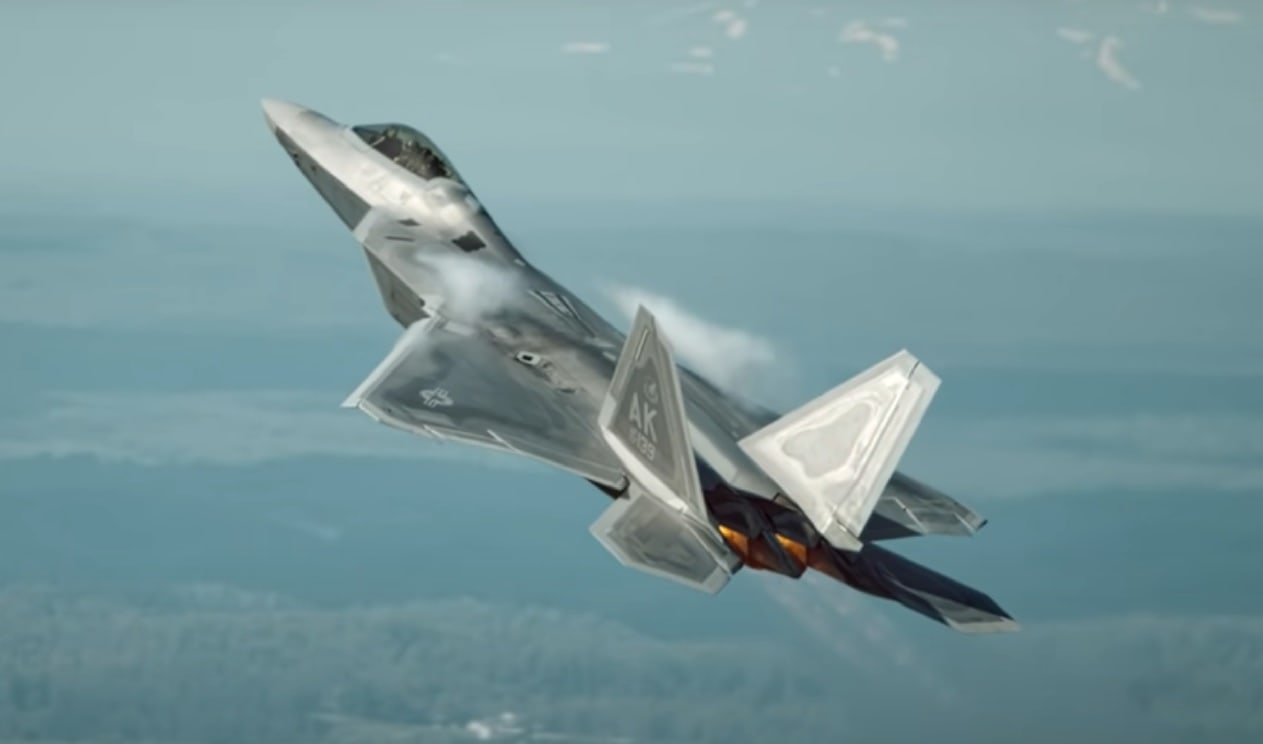Yes, there is a lot of competition for the best fighter jet on the planet these days with new fighters like NGAD coming in the next few years. But, at least for now, the F-22 Raptor has to be considered in the conversation as the best plane in the sky. Here’s why – There’s an old joke thrown around in, or perhaps it would more accurate to say “thrown at,” the U.S.. fighter pilot community that the difference between a fighter pilot and God is that God doesn’t think he’s a fighter pilot. Be that as it may, if there’s any fighter pilot that does indeed elevate (bad pun intended) American fighter pilots to deity-like status, it’s the Lockheed Martin F-22 Raptor.
F-22: The Supreme Being of 5th Generation Fighters?
The always savyAlex Hollings of Sandboxx News rates the F-22 as the best stealth fighter in the world: “As the world’s first 5th generation fighter, the F-22 Raptor is the oldest design on this list, but its incredible combination of low observability and high performance not only set the standard for all stealth fighters to come, it remains the most capable stealth fighter in service anywhere on the planet to this very day…While the F-22 doesn’t offer the same degree of situational awareness found in the F-35, its sensor and avionics suite is still considered to be robust enough to give Raptor pilots what the Air Force calls, ‘first kill opportunity,’ meaning it can spot enemy fighters and engage them with weapons that reach beyond-visual-range before the bad guy even knows it’s there.” (original emphasis).
For a basis of comparison, Mr. Hollings ranks the Raptor’s competitors in ascending order: Russia’s Sukhoi Su-57 Felon, Red China’s Chengdu J-20, and America’s (and Lockheed Martin’s) other entry into the 5th Generation fighter game, the F-35 Lightning II.
Moreover, the F-22 is said to carry a frontal radar cross-section (RCS) of just 0.0001~0.0002 square meters, which is some 5,000 times smaller (yes, you read that correctly, five thousand) than expert assessments of the Russian Su-57, at least 800 times smaller than the J-20, and even 5-10 times smaller than the much newer F-35.
Powered by two Pratt & Whitney turbofan engines and capable of reaching speeds of Mach 2 (1,534 mph/2,469 kph), this warbird has a ceiling of 50,000 feet (15 kilometers) and a range of 1,841 miles (2,962 km) without refueling.
For purely air-to-air missions, the Raptor carries six AIM-120 AMRAAM “Slammer” missiles and two AIM-9 Sidewinder heat-seeking missiles (no AIM-7 Sparrows need apply); for air-ground, the plane packs two Slammers, and either two 1,000-pound (450 kg) JDAMs or eight 250-pound (110 kg) GBU-39 Small Diameter Bombs. And in case of a good old-fashioned dogfight, the bird of prey wields a 1× 20 mm M61A2 Vulcan rotary cannon with 480 rounds of ammo.
F-22: This Air God is Still a Mortal
Alas, this God of the Air has been “killed,” so to speak, not in air-to-air combat or even by enemy SAMs or triple-A fire, but by the bureaucrats.
Well, perhaps not “killed” outright, but definitely stunted in its growth potential; in 2009, then-SECDEF Robert Gates cancelled the F-22 program after less than half of the requited 381 planes were built.
Why? Gates, in his own memoir, “Duty,” rationalized that the F-22 was useless in the Afghanistan and Iraq counterinsurgencies, was a Cold War relic, and that a Chinese stealth fighter wouldn’t be along until the 2020s, so nothing would be lost by killing it.
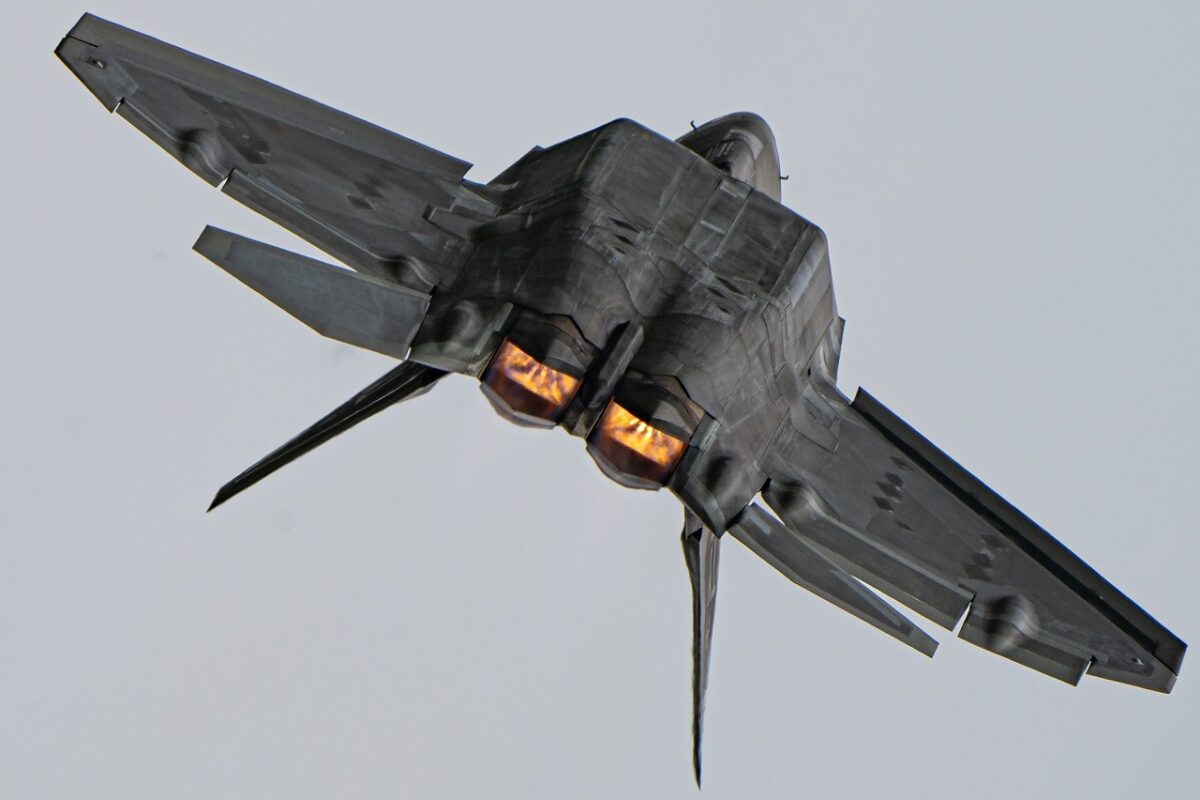
F-22 Raptor. Image Credit: U.S. Air Force.
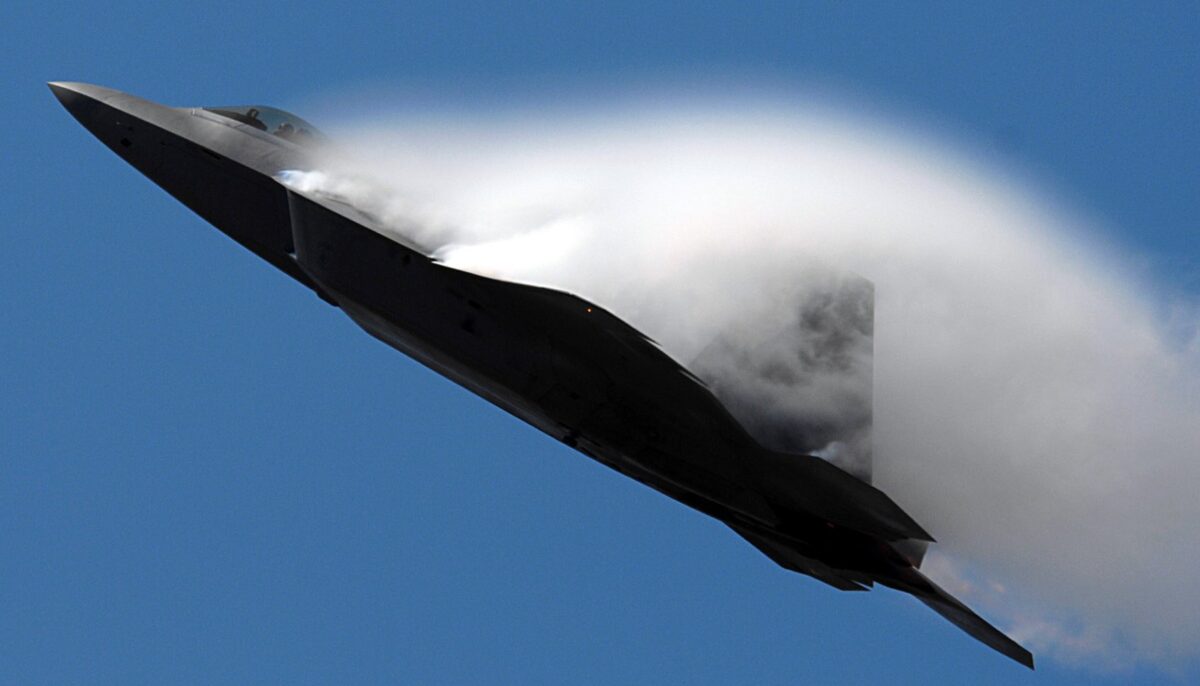
F-22 Raptor. Image Credit: U.S. Air Force.
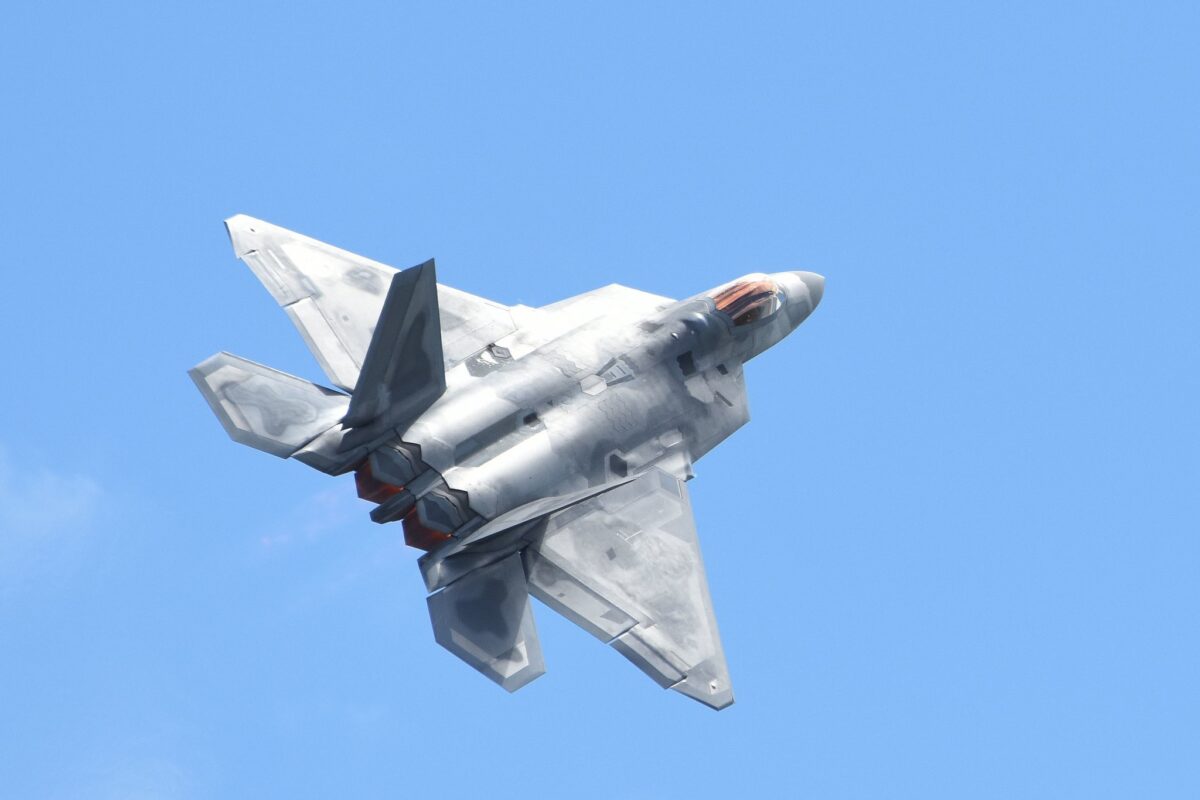
F-22 Raptor. Image Credit: U.S. Air Force.
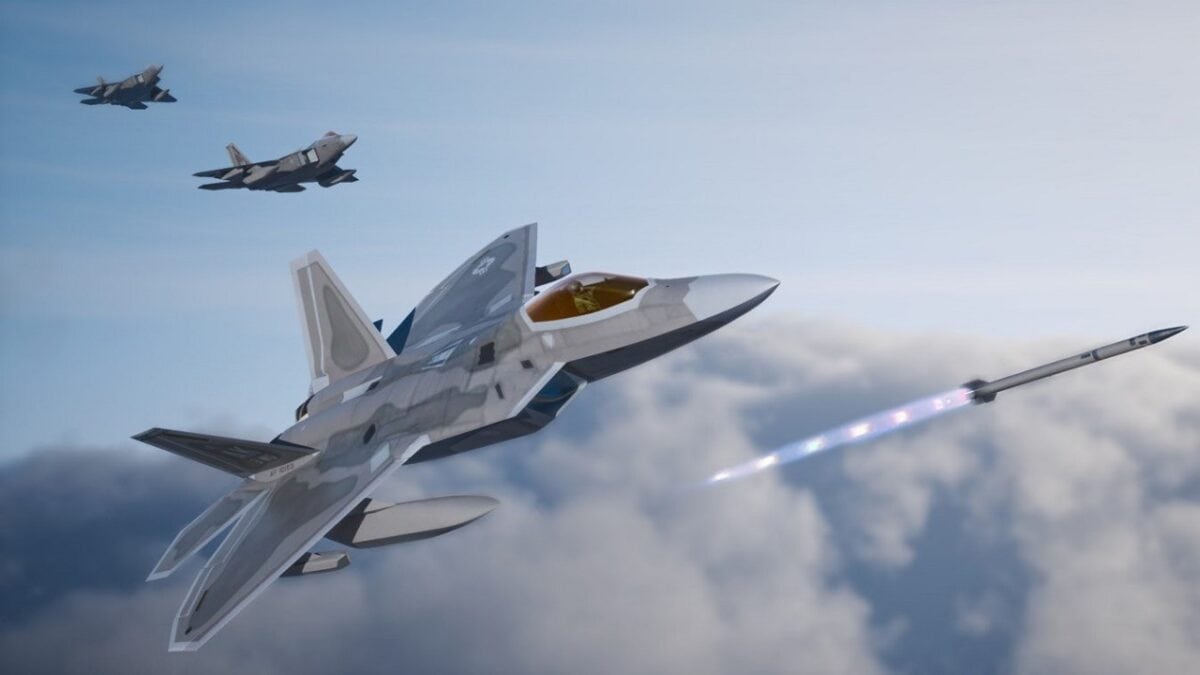
F-22 Raptor. Image Credit: U.S. Air Force Social Media.
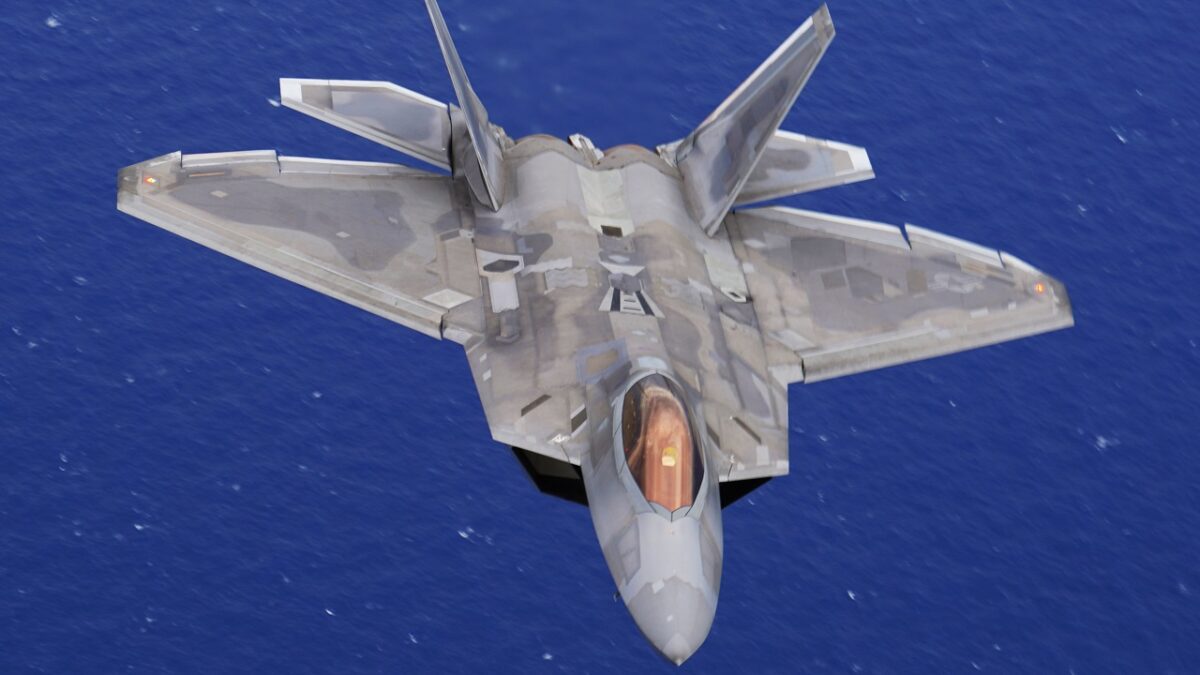
F-22 Hawaiian Raptor flies over Joint Base Pearl Harbor-Hickam, Hawaii, Dec. 5, 2019.
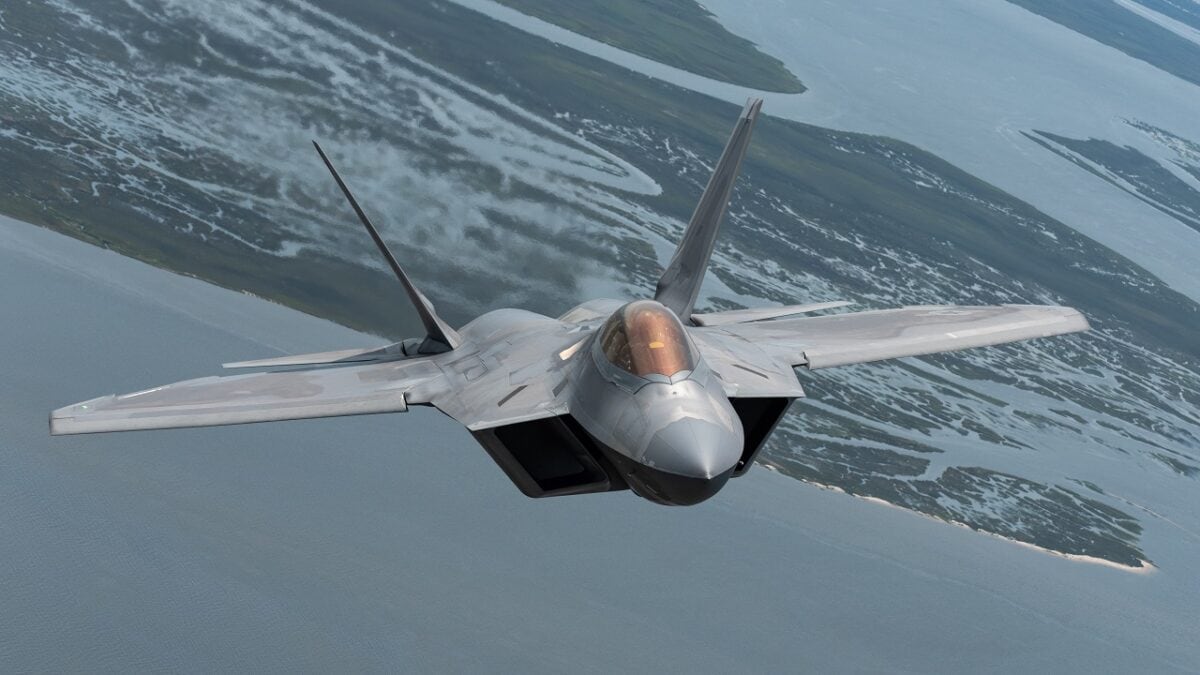
U.S. Air Force Maj. Paul ‘Loco’ Lopez, F-22 Demo Team commander/pilot, performs an aerial demonstration during the MCAS Beaufort air show, April 27, 2019. Maj. Lopez has over 1,500 hours flying both the F-15 and the F-22 and is in his second year as the commander of the F-22 Raptor Demonstration Team. (U.S. Air Force photo by 2nd Lt. Samuel Eckholm)
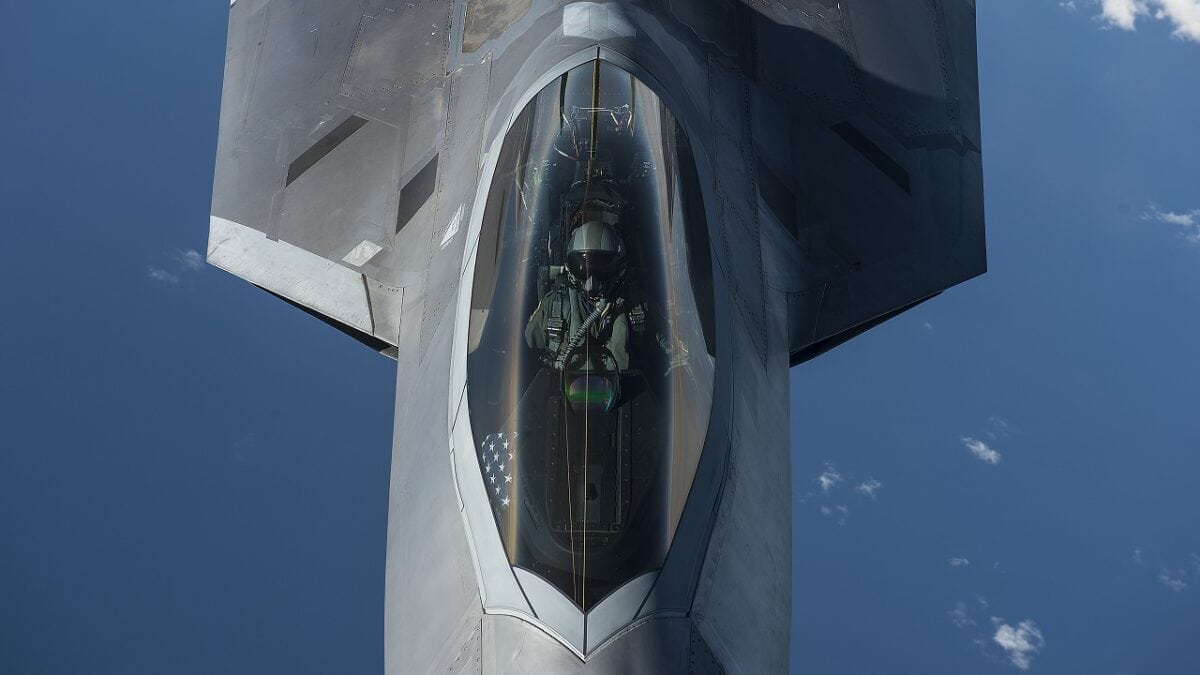
A U.S. Air Force F-22 Raptor pilot from the 95th Fighter Squadron, Tyndall Air Force Base, Fla., flies over the Baltic Sea Sept. 4, 2015. The U.S. Air Force has deployed four F-22 Raptors, one C-17 Globemaster III, approximately 60 Airmen and associated equipment to Spangdahlem Air Base, Germany. While these aircraft and Airmen are in Europe, they will conduct air training with other Europe-based aircraft. (U.S. Air Force photo by Tech. Sgt. Jason Robertson/Released)
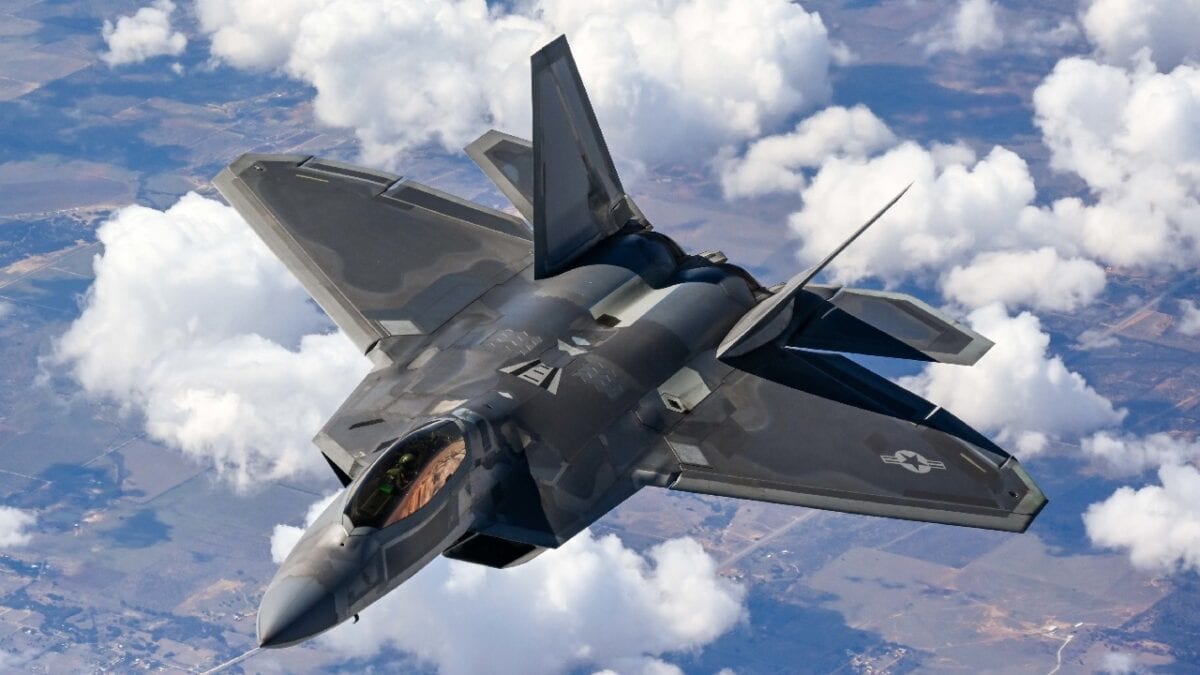
An F-22 Raptor Demonstration Team pilot flies behind a KC-135 Stratotanker from the 465th Air Refueling Squadron assigned to Tinker Air Force Base, Oklahoma, March 8. 2021. The F-22 team from Joint Base Langley–Eustis, Virginia, is assigned to Air Combat Command and received fuel from the Okies during their flight back to their home station after performing at an air show. (U.S. Air Force photo by Senior Airman Mary Begy)
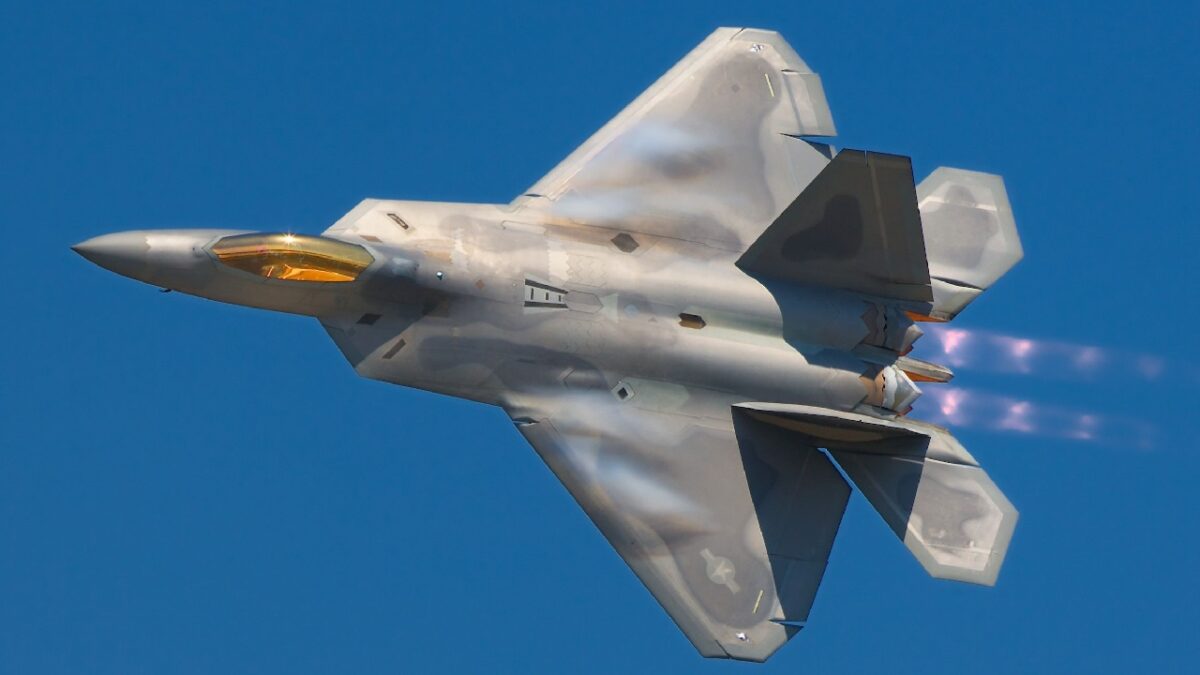
A Lockheed Martin F-22A Raptor fighter streaks by the ramp at the 2008 Joint Services Open House (JSOH) airshow at Andrews AFB.
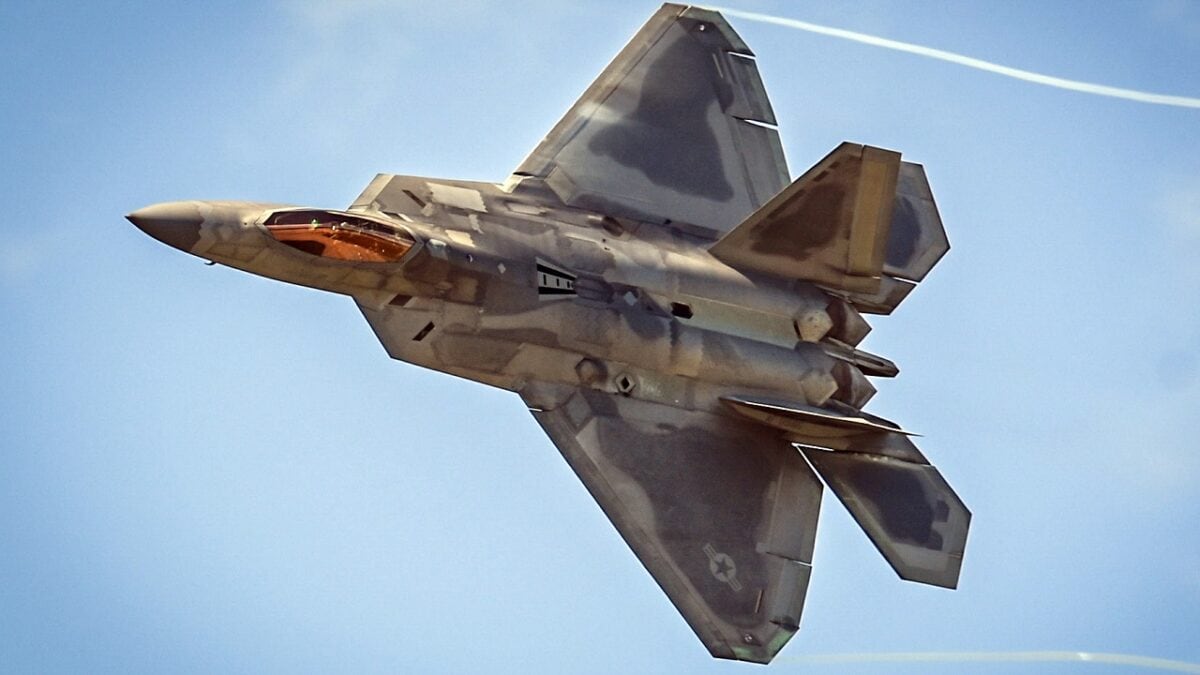
Maj. Joshua “Cabo” Gunderson, F-22 Raptor Demonstration Team commander, performs at the Thunder Over New Hampshire Air Show at Pease Air National Guard Base in Portsmouth, N.H., Sept. 11, 2021. The mission of the F-22 Demonstration Team is to showcase the unmatched maneuverability of the Air Force’s 5th generation air dominance stealth fighter, highlight the history of the Air Force’s service though heritage formation flights, and interact with local communities through outreach events. (U.S. Air National Guard photo by Tech. Sgt. Steven Tucker)
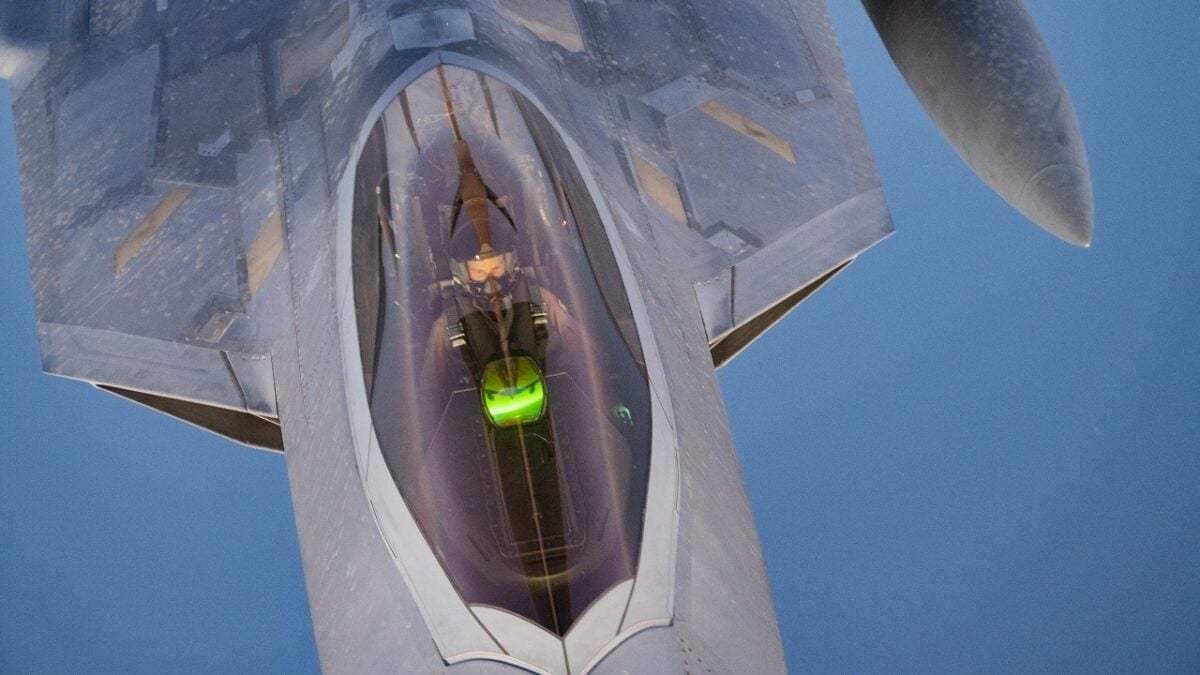
A U.S. Air Force F-22 Raptor receives fuel from a U.S. Air Force KC-135 Stratotanker assigned to the 340th Expeditionary Air Refueling Squadron, above the U.S. Central Command area of responsibility, March 14, 2022. The F-22 Raptor is a fifth-generation aircraft that combines stealth, supercruise, maneuverability, integrated avionics, and is designed to project air dominance, rapidly and at great distances, and deter regional aggressors while deployed in the USCENTCOM AOR. (U.S. Air Force photo by Staff Sgt. Frank Rohrig)
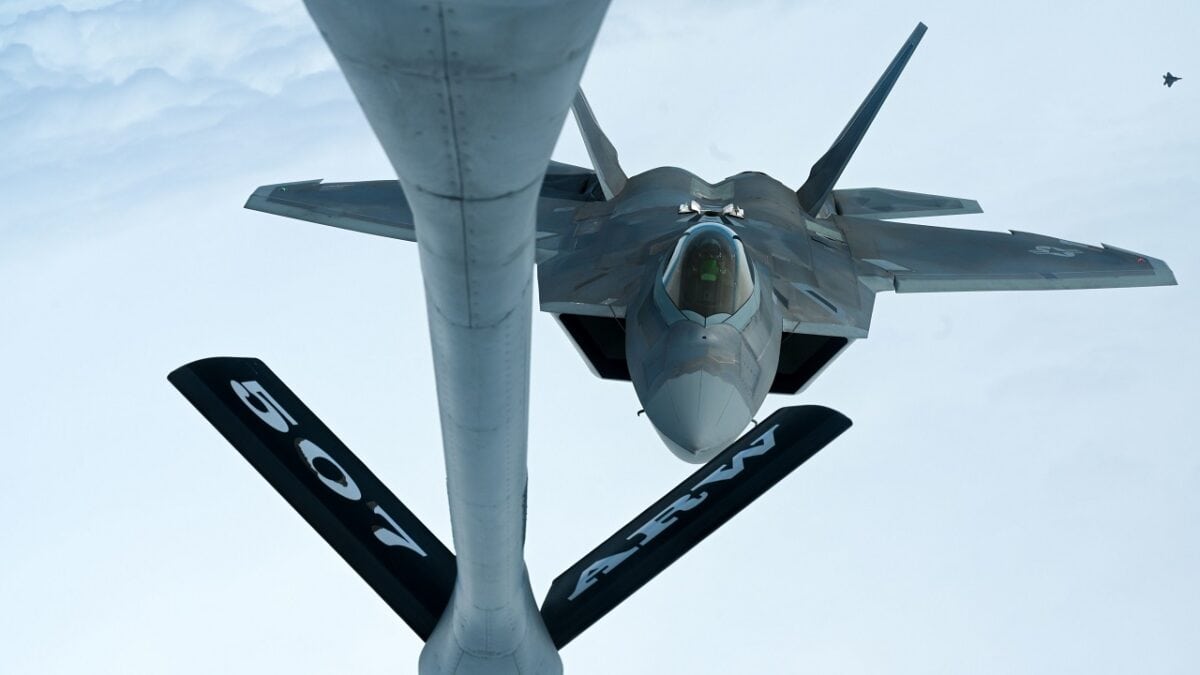
Eight F-22 Raptors with the 325th Fighter Wing at Tyndall Air Force Base, Florida, receive fuel from a KC-135 Stratotanker from the 507th Air Refueling Wing from Tinker Air Force Base, Oklahoma, Feb. 7, 2022, while the Okies flew to the U.S. Virgin Islands for training. (U.S. Air Force photo by Lauren Kelly)
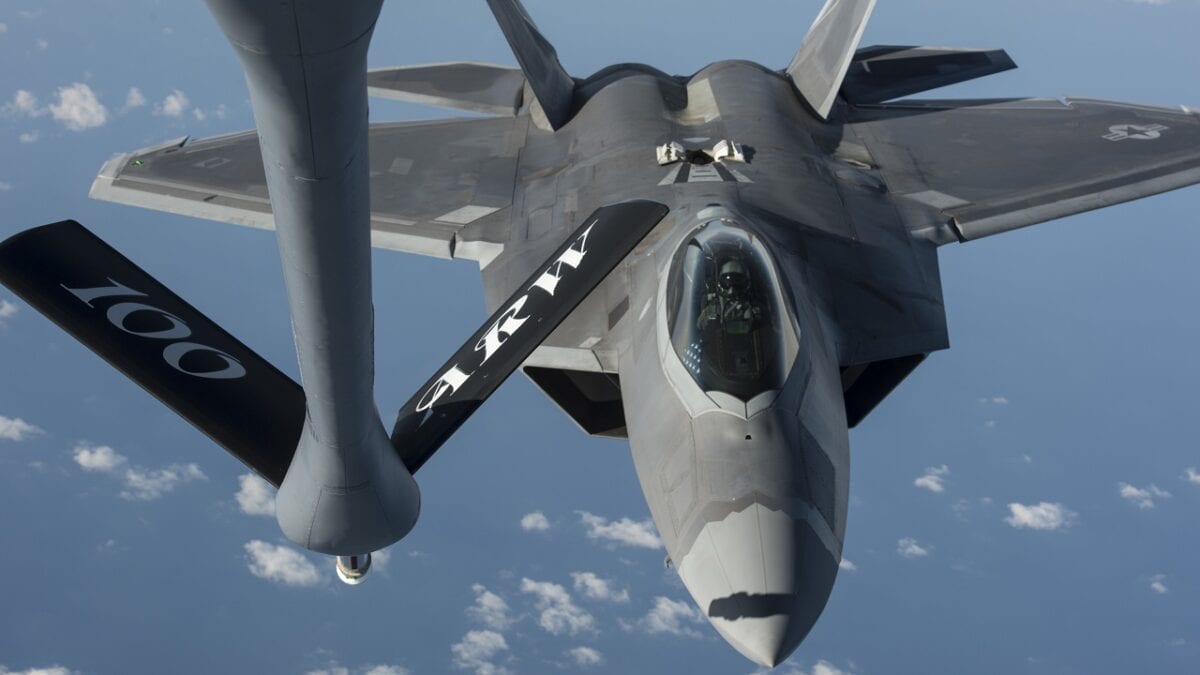
A U.S. Air Force F-22 Raptor from the 95th Fighter Squadron, Tyndall Air Force Base, Fla., moves into position behind a KC-135 Stratotanker from the 100th Air Refueling Wing, RAF Mildenhall Air Base, England, to conduct aerial refueling Sept. 4, 2015, over the Baltic Sea. The U.S. Air Force has deployed four F-22 Raptors, one C-17 Globemaster III, approximately 60 Airmen and associated equipment to Spangdahlem Air Base, Germany. While these aircraft and Airmen are in Europe, they will conduct air training with other Europe-based aircraft. (U.S. Air Force photo by Tech. Sgt. Jason Robertson/Released)
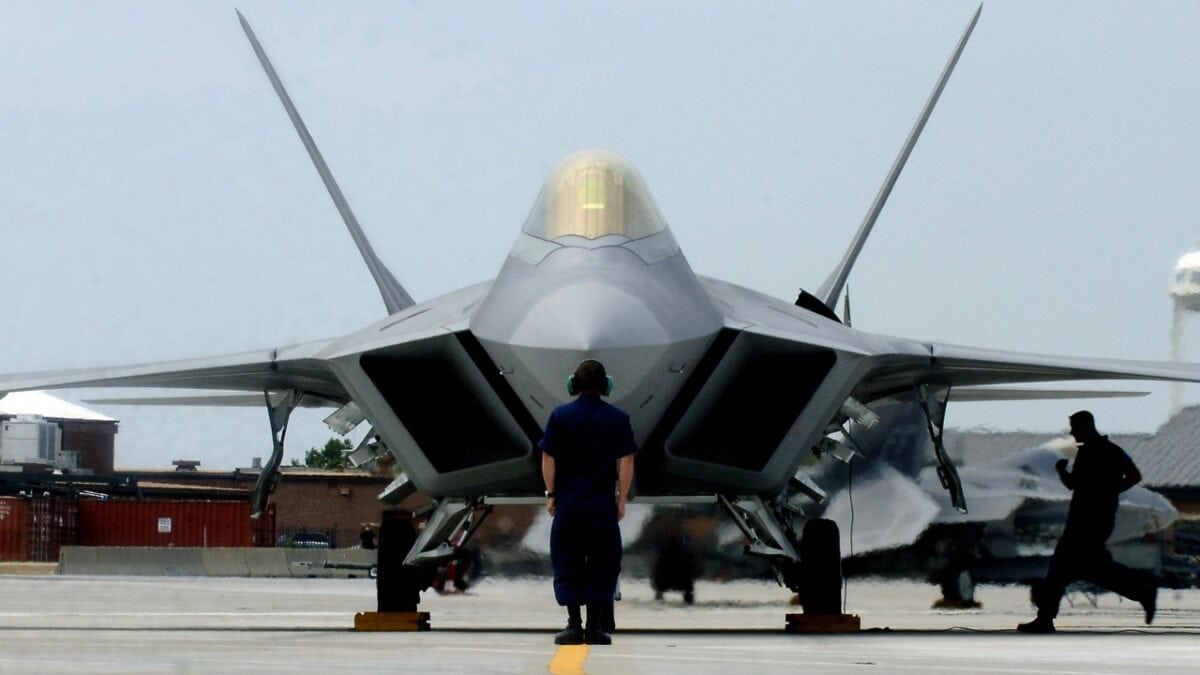
F-22 A Raptor Demonstration Team aircraft maintainers prepare to launch out Maj. Paul “Max” Moga, the first F-22A Raptor demonstration team pilot, July 13. (U.S. Air Force photo/Senior Airman Christopher L. Ingersoll)
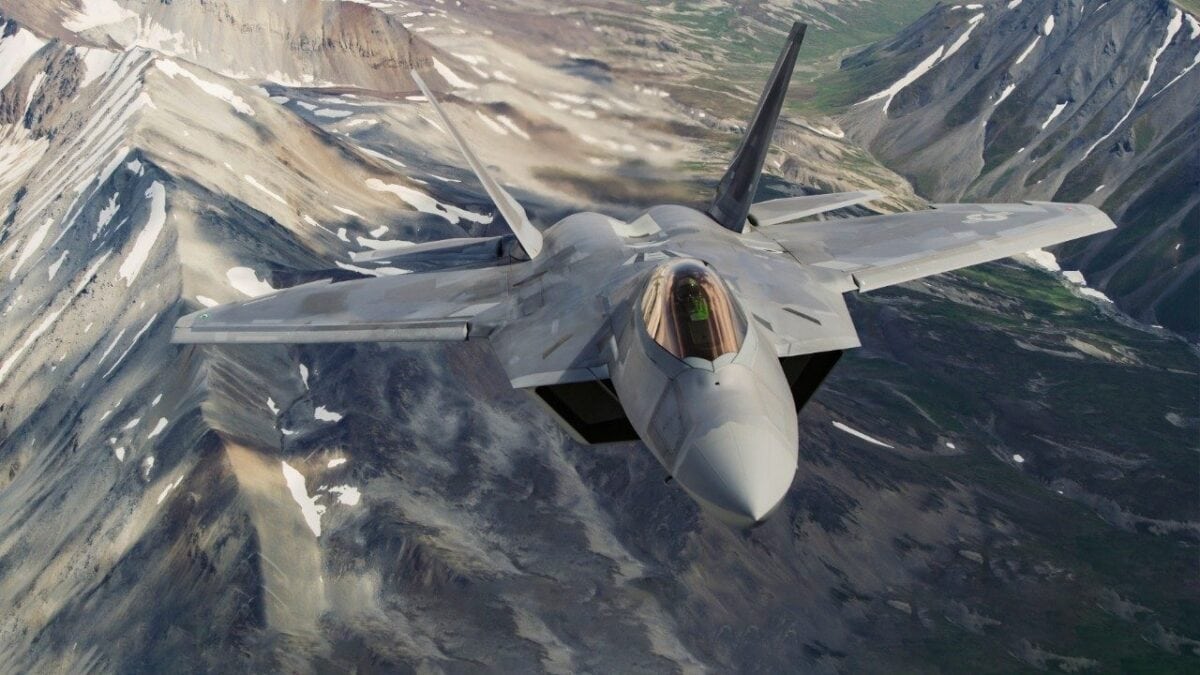
F-22 Raptor. Image Credit: Creative Commons.
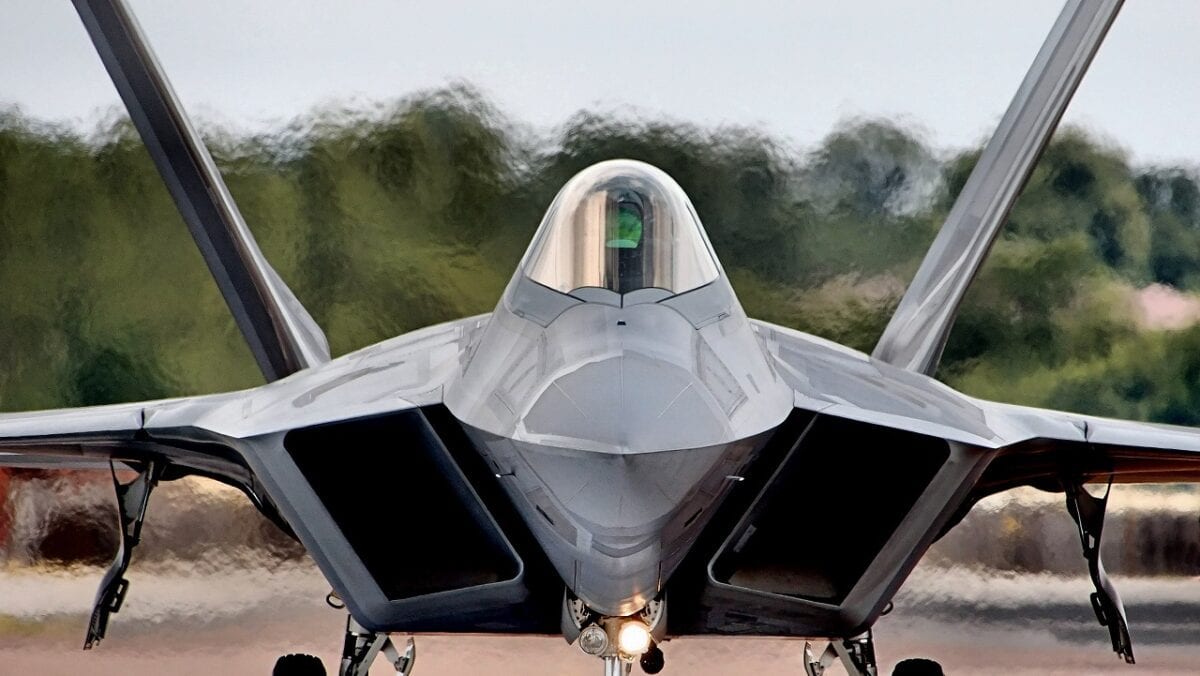
F-22 Raptor. Image Credit: Creative Commons.

F-22 Raptor. Image Credit: Creative Commons.
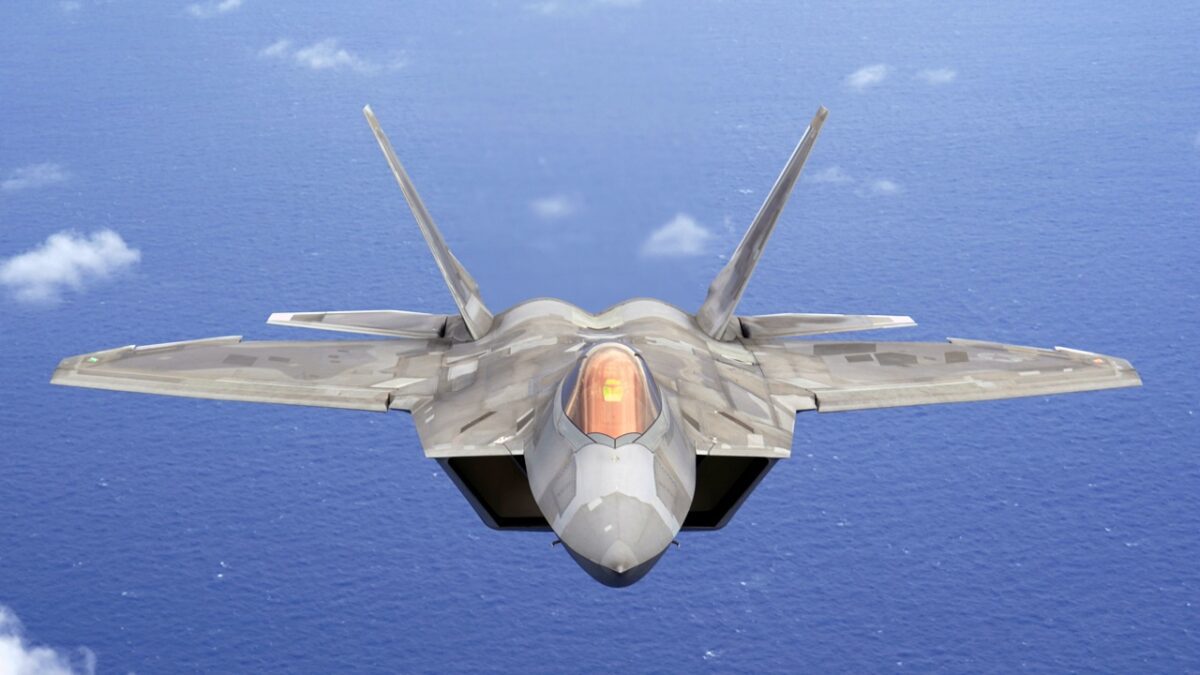
F-22 Hawaiian Raptor flies over Joint Base Pearl Harbor-Hickam, Hawaii, Dec. 5, 2019.
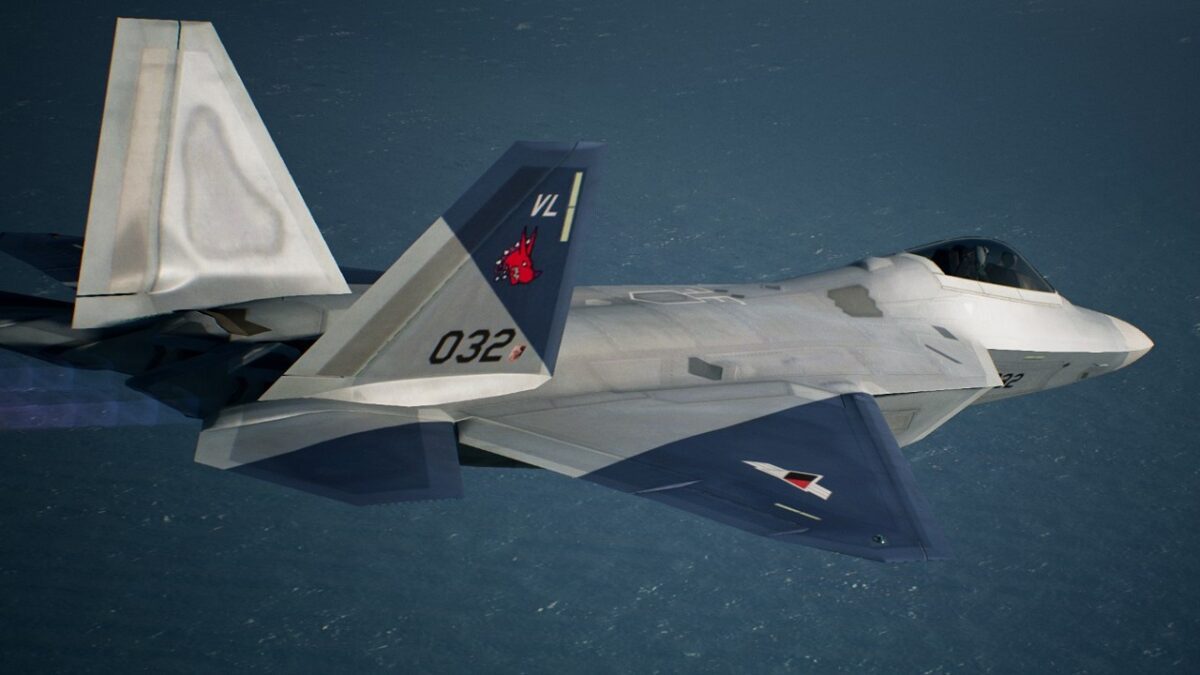
FB-22 Stealth Bomber? Image is of an F-22 Raptor. Image Credit: Creative Commons.

F-22 Raptor. Image Credit: Creative Commons.
Now that we are in the 2020s, it becomes readily apparent that Secretary Gates wasn’t a believer in long-term planning, which is all the more shocking in light of the fact that Mr. Gates himself was a former USAF officer.
For a more detailed—and damning—account of Gates’s decision to undermine the F-22 program, read the 2015 book Air Power Abandoned: Robert Gates, the F-22 Raptor and the Betrayal of America’s Air Force, by the late great Robert F. Dorr, arguably the most prolific military aviation author since Martin Caidin, an Air Force veteran in his own right, and a Facebook Friend of mine who unfortunately passed away before I ever got to meet him in person (a poignant reminder that I’m writing this article on Memorial Day).
Christian D. Orr is a former Air Force officer, Federal law enforcement officer, and private military contractor (with assignments worked in Iraq, the United Arab Emirates, Kosovo, Japan, Germany, and the Pentagon). Chris holds a B.A. in International Relations from the University of Southern California (USC) and an M.A. in Intelligence Studies (concentration in Terrorism Studies) from American Military University (AMU). He has also been published in The Daily Torch and The Journal of Intelligence and Cyber Security.

